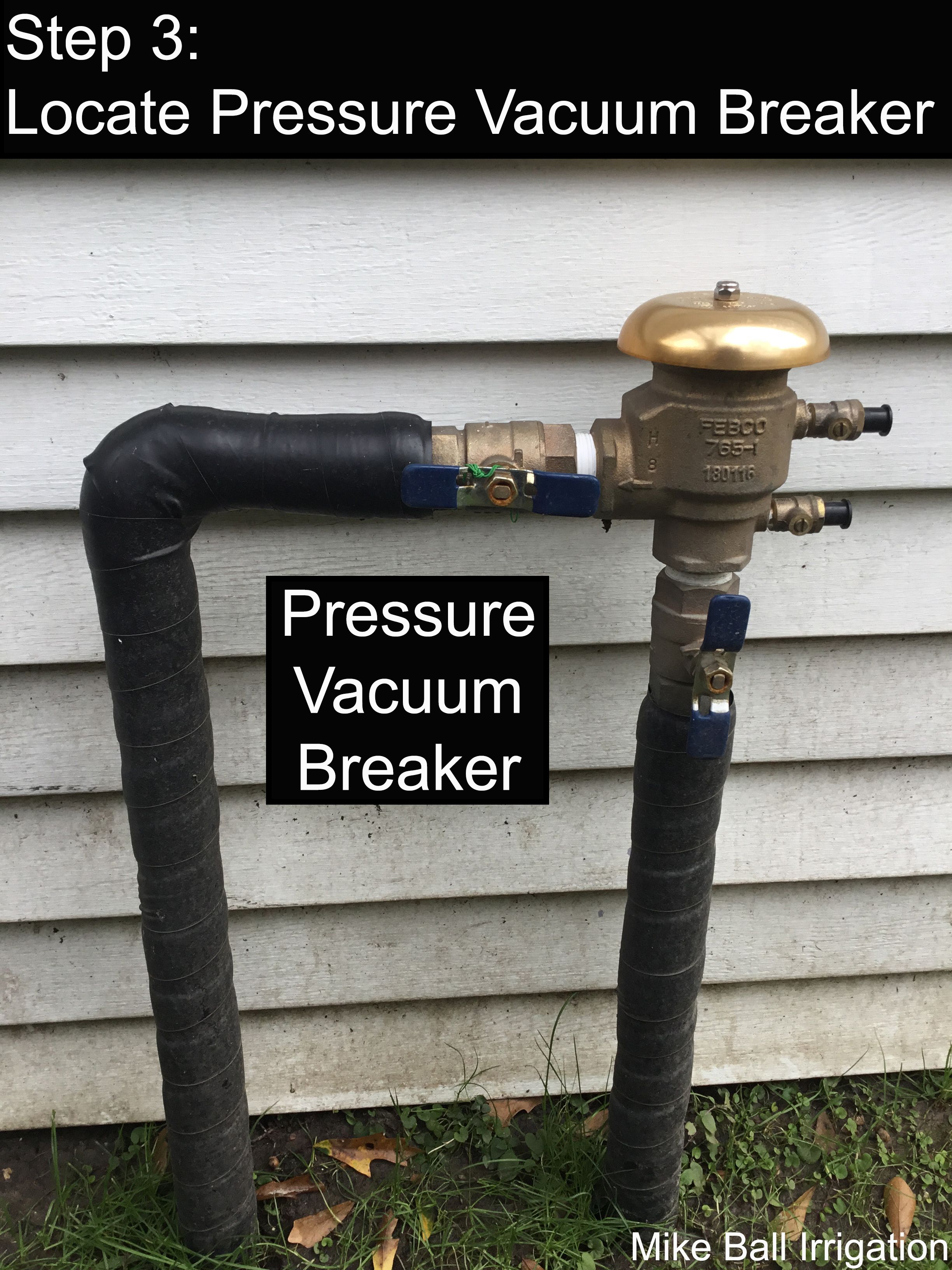HOW TO PROTECT YOUR PRESSURE VACUUM BREAKER FROM FREEZE.
Winter is just around the corner. With a cold front on the way, the temperatures in Houston are dropping fast. Midland experienced a 30 degree drop in temperature in a 24 hour period! In this article we will provide you with step-by-step instructions on you how to protect (winterize) your Pressure Vacuum Breaker in prepareation for freezing temperatures.
We originally posted this article last year, but this is a issue that will need do be addressed each and every winter. So we care putting it back out there to make sure that the information is readily available, so everyone can make the appropriate preparations.
STEP 1: LOCATE YOUR ISOLATION VALVE
If you have an irrigation system, chances are that you have an isolation valve. In January 2009, the Texas Commission on Environmental Quality mandated that all new irrigation systems were required to have an isolation valve installed. So unless your sprinklers were installed before 2009, you have one. The purpose of an isolation valve is to separate the flow of water for your sprinkler system from the domestic line, the tap water that flows into your house.
There are two possible locations for your isolation valve. The first place it could be located is in front of your water meter near the street or sidewalk. The other place your isolation valve could be is close to your home, near where your domestic water main line enters the house. This will be the hardest part of this entire process. The isolation valve cover is usually green and looks just like other valve boxes that you have with your system. It can often be hidden by soil or grass growth, so you may have to poke around a bit with a shovel locate it. We recommend locating the isolation valve a few days or even weeks ahead of a coming freeze, so you're not out in the cold weather looking for it in a panic.



STEP 2: TURN OFF THE ISOLATION VALVE
Open the cover of your isolation valve. Turn the handle 1/4 turn so that it is no longer parallel with the pipe. When your valve handles are parallel with the pipe, that is your indication that the valves are open and water is flowing freely through to your irrigation system. When your valve handles are perpendicular to the pipe it is an indicator not only to yourself, but also to your irrigation specialist, that your valves are closed.

STEP 3: LOCATE YOUR PRESSURE VACUUM BREAKER
Your Pressure Vacuum Braker, or PVB for short, should be located on the same side of the house as your water meter.

STEP 4: OPEN THE TEST COCKS ON YOUR PVB
With a flathead screwdriver, turn both of the test cocks 1/4 turn. Make sure that the line is parallel with the opening. This will allow any excess water that is in your PVB to flow out.

STEP 5: TURN THE PVB VALVE HANDLES 45°
Finally, turn both of the valve handles 45°, or 1/8 of a turn. Do NOT close the valves completely. If they are completely closed, whatever water that remains in your PVB will trapped in the ball valve with nowhere to go. When the water freezes and expands, the pressure could potentially cause that ball valve to crack. By keeping the valve handles at a 45° angle, this would provide the freezing water room for expansion, thereby deminishing the risk for damage to your PVB.

The image below is an example of what it could look like when the frozen water expands and cracks your PVB.

Don't forget to wrap your pipes leading to and from your Pressure Vacuum Breaker with insulation and seal them tightly with duct tape!
I hope that this article has helped you to better understand how to prepare your Pressure Vacuum Breaker for the coming Winter.
If you are having trouble locating your isolation valve, feel free to give us a call. For a minimal fee, we will come out and help you winterize your Pressure Vacuum Breaker. We love coming out and helping our clients, current and prospective, in as many ways as we can, but if you do need help winterizing your Pressure Vacuum Breaker, please reach out to us. It is much better to make preparations and prevent damage to your system than risk a leak that would waste water and run up your bill.
Call us at 713-818-1354 or reach out via email to save@mikeballirrigation.com!























